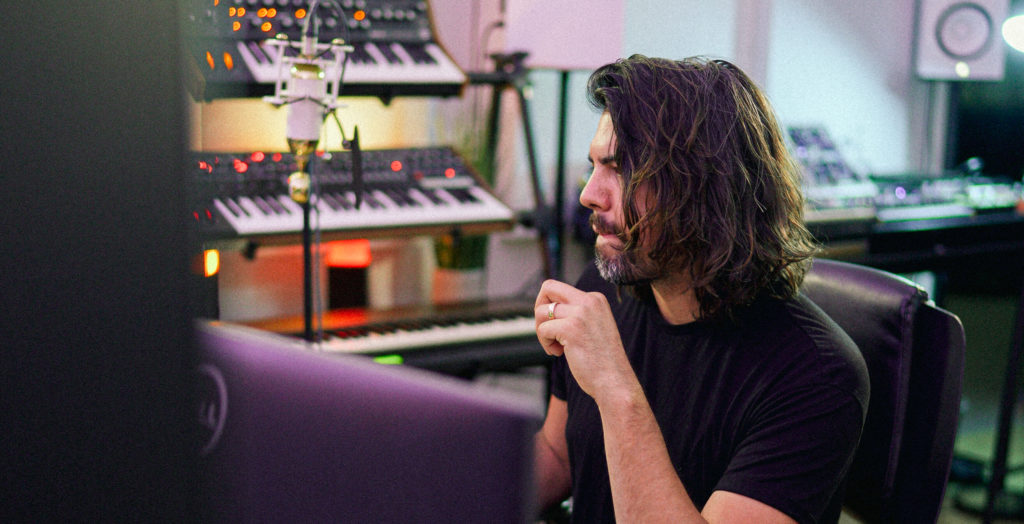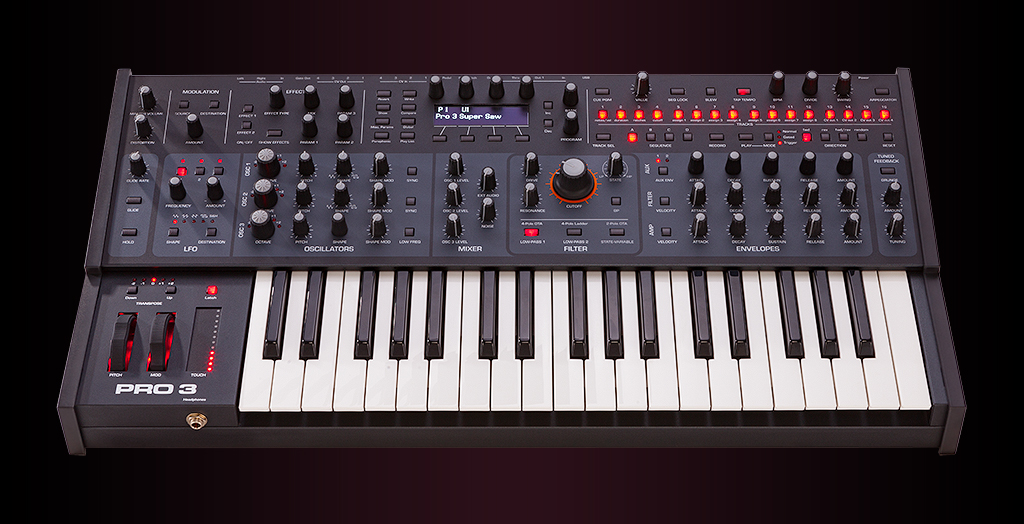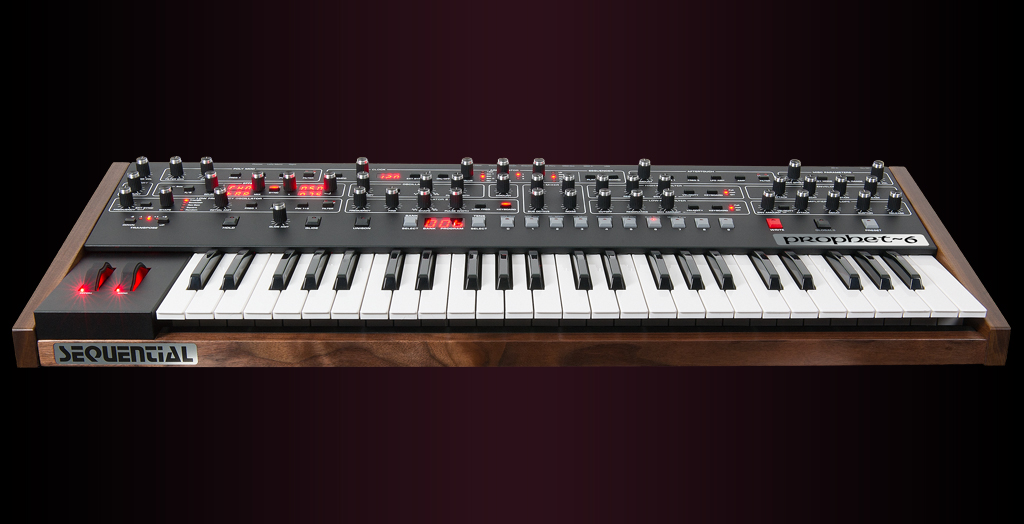
Featured Artist Julian Cisneros
Gear Used
Julian Cisneros is a film composer and multi-instrumentalist most known for taking the traditional orchestra and unifying its versatility with arrays of analog synthesis and organic texture. The result is a continuously evolving sound that integrates with his various projects.
In 2020, Julian launched a licensing site featuring his diverse catalog of commissions from some of the worlds top studios and brands. Some of his clients include RED Digital Cinema, National Geographic, Disney, Lucasfilm, Honda, Filson, Black Diamond, Mitsubishi, OceanX, Vizio, Prana and many more.
Based in sunny Orange County, California, Julian continues to innovate and collaborate with filmmakers all over the world.
We chatted with Julian on how he uses Sequential instruments in his music:
How did you first get started with music? Was it nature or nurture for you: Were you a self-starter or was it something that you grew into?
I remember being 10 years old and feeling this draw to learn guitar. Since Fender Guitars were made in my hometown, they had this Kids Rock Free program which I jumped at. From that point it was pure nature for me. I kept moving forward and eventually started tracking ideas to a tape recorder. After a while I had tapes and tapes of ideas and grew more hungry for deeper recording capabilities, though I had no idea where to even turn for that. My recording process was so archaic, I had to playback a tape from a separate source then layer a new performance over it while recording into a different tape recorder. Looking back, all that limited resource was the best foundation to build from. So yea, you could say I was definitely a self-starter.
It seems that some musicians have a sort of “eureka” moment in their early years where the light bulb comes on and they realize “This is what I need to be doing.” Do you recall anything like that for you?
Moving on from my experiences in the previous question, that “eureka” moment came when my friend’s older brother got a program called SoundForge (whichever ancient version was around in 2002) on his computer which allowed me to create multiple tracks in a single project. I could FINALLY layer tracks individually, a literal game changer for me. I can still think back to those early songs, creating music became a drug.
Tell us about your first synth!
Ahhh my first synth. Without regret, that would be the Arturia MicroBrute. I had enough foresight to understand that I should probably start small and see if I can even implement analog into my workflow. To my surprise, that synth made its way into every project. The arps, the sub bass, all of it was perfect for the time.
Do you usually design your own sounds? If so, how do you approach that? Do you have a process?
I do. In fact, I make it a point to sound design as much as possible for every score. For me, all great sound design lies within one’s use of EQ and pitch. Pitch manipulates its source in so many cool ways, and EQ allows you to evolve that sound by isolating or cutting certain frequencies. I will typically record some freeform performance from, say my Pro-3, where I hold down a single note and modulate the filters or oscillators during the process. The key for me is to stay in a specific key, so sometimes I’ll add 5ths if applicable.
Once in Logic, I then either use pitch to create a melody out of that sound, or detune and use that sound as a unique pad by adding some delay or reverb. The magic is in the artifacts from the source sound. In this example, all that slow modulation from the Pro-3 creates such a unique and profound sound once plugins get involved. Lately, I’ve been loving plugins like Sketch Cassette II or Thermal to create unforeseen textures or to make that sound indistinguishable from the original source. Nowadays, I think all great sound design is the tasteful fusion of analog and plugins… there’s just no contest to the flexibility the combo provides.
What kind of things get you excited about an instrument?
Most synths today boast “endless possibilities”. When I hear that, I instantly lose interest. I love simplicity, and when up against a deadline, the last thing you need is a 10 minute menu dive in order to modulate some basic parameters. When I see an instrument that seems intuitive and is mostly knob per function, I know that synth is for me. Of course, the sound engine, filter, modulation, and sequencer options are a huge factor in me making that investment.
When you get a musical idea how do you go about developing it? Can you give us an example?
I’ve actually answered all the other questions and left this one for last… its tricky to answer because developing a musical idea is sort of this out of body experience for me. I’ll give this one example, though, something that has worked well for me over the past year. When I’m stuck, or uninspired by what I’m currently creating, I take a step back and decide to just make noise. I usually head to my modular and start working up some obscure patch. Once I arrive at something musical, and in a practical vein for the score, I hit record in Logic, trigger Pamela’s New Workout (my modular clock of choice) and just start, for lack of a better phrase, having fun. I’ll record for a few minutes and give myself no boundaries. This process works because if something is time based, I can easily sync the audio with the rest of the score. Or if I’m not working to a tempo and I’m “droning out”, I know that I can chop a piece of the audio, and create something in time with sound design. This method has brought a lot of happy accidents and certainly the foundation for some of the best cue’s I’ve created.
Do you have certain musical ideals? Certain things that you strive for?
I want to be unique. A huge challenge with film scoring is dealing with temp music. Clients typically have a film score they’re inspired by and want you to create something in that vein. My goal is to create film scores that are 100% unique, pulled from imagination and not “what is marketable”. That is what I truly strive for.
Generally speaking, are you happier in the studio or on stage?
Well… it’s been over 10 years since I’ve played on stage! Nothing comes close to the energy, excitement, and sound of a stage. But the studio has this feeling of home, the place where I’ve grown and where I’m continuing to grow. The stage is fun, but the studio is where I live. Studio for sure.
What are you listening to these days?
Over the past few years, Four Tet has become my most listened to artist by far, I can’t get enough. Kieran’s creative use of sound design inspires me daily, also his minimalist approach to his compositions really influence my decision making day to day. From him, I’ve learned how to let music breathe, a discipline that seems to only come with time. Floating Points and Jon Hopkins are big influences as well, I respect their sound design and musicality so much. Outside of those artists, Khruangbin, Benee, Kid Cudi, and Tame Impala have been on heavy rotation this past year. Spotify’s POLLEN playlist has been my favorite resource for discovering new artists pushing the boundaries, I highly suggest checking there often. Believe it or not, I never listen to soundtrack music.
What kinds of things inspire you — musically or otherwise. Has this changed much over time?
I’m genuinely inspired by a good movie or show. Experiencing quality filmmaking and a knockout score always make me want to head straight to the studio to create. Then of course, hearing new, really really good music. The kind of music that blows your mind, can’t say enough about that. At my core, music will always be my number 1 source for inspiration. Over time, however, quality family time, a good meal, and getting outdoors have risen up the ranks for sources of inspiration. If my body, mind, and spirit aren’t all in a good space, creating can be a big challenge for me, especially when up against a harrowing deadline.
Do you have a musical bucket list?
If I were to answer this question in my 20s, I’d probably answer scoring a big blockbuster or something. Now, my priorities and perspective on life have changed and so have my goals as a composer. To be completely honest, I am currently really driven to work on projects where I can collaborate with brilliant filmmakers who know my sound, love my sound, and want to bring that sound into their ecosystem. Creative freedom can be a tricky thing as a film composer so I am more and more interested in maintaining that freedom, and less and less interested in projects that might be “big” but where the music will be more of a product than a piece of art. As far as goals go, though, I would love to, within the context of what I just mentioned, go to the ArcLight, buy a big tub of popcorn, a tall beer, and sit in the center of the theater and watch a film I scored.
What made you choose Pro 3?
I had just been pulled on board to score Attack Of The Murder Hornets for Michael Paul Stephenson and knew I needed a synth that could be as flexible and easy to use as possible. Earlier in 2020 I had seen the Pro-3 released and was waiting for the perfect opportunity to purchase. The Pro-3 seemed like the perfect package… 3 filter options (!), analog and wavetable oscillators, loads of modulation, and the easiest, most versatile sequencer to my knowledge on a synth. And I was right!
How are you using it?
This synth is living at my right hand. Whenever I need a sound, any sound, I either start cycling through presets to find a decent starting point, or I design from scratch. The sequencer is the most performance based sequencer I’ve ever used and made my job so much easier when scoring AOTMH. The Pro-3 is a solid sub synth as well where you can just design a simple sub synth that you open up with a filter of choice. Throughout the film I would hit record, follow the chord progression, and ride the filter to accent key moments.
My favorite, bright shining feature of the Pro-3 is the 3 filter options. The ability to create a patch and then give it completely new texture by changing the filter is unmatched. Having that OB-6 State Variable filter as an option is the cherry on top.
Any interesting tricks or techniques you’d like to share?
Create a solid sequence and hit Play (recording into your DAW of choice). Ride the filter and while the synth is in sequence, flip directions of the sequencer to create a very exciting and unique performance based sequence. I did this multiple times throughout AOTMH and created some of my favorite cues as a result. And the process is a BLAST. I won’t stop sharing with people that this synth makes music fun, unique, and exciting, no synth has accomplished that for me.
LINKS


